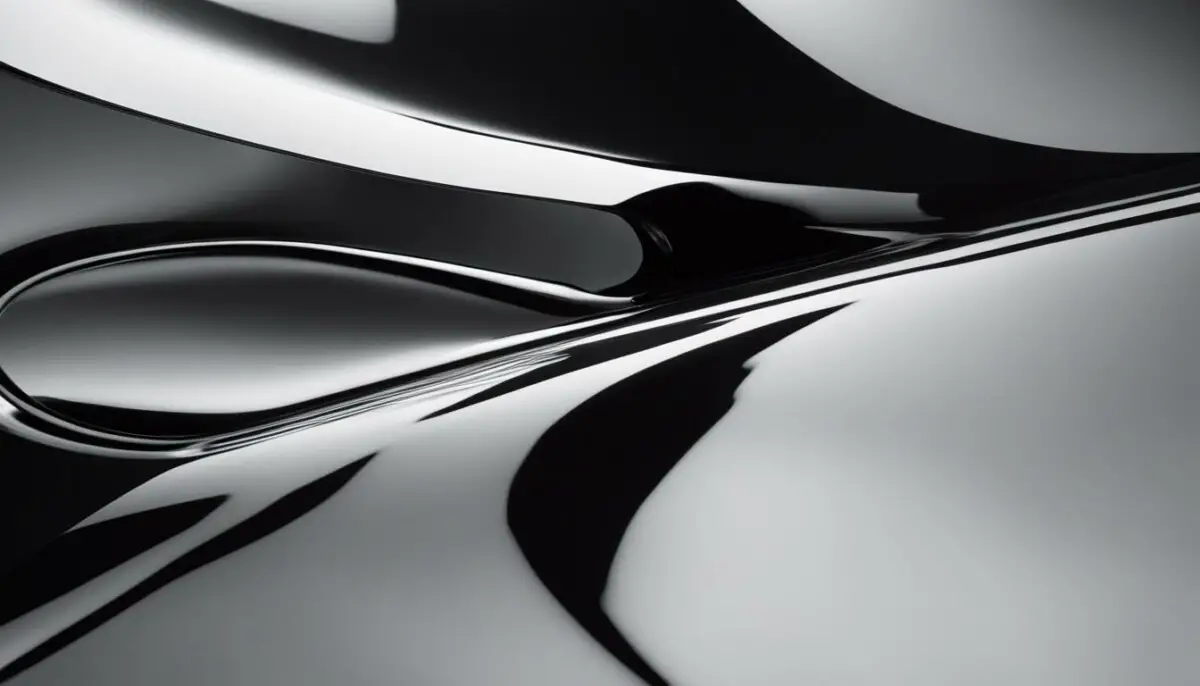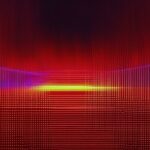Last Updated on 5 months by Francis
Have you ever wondered if mirrors reflect infrared light? The answer is yes, mirrors do reflect infrared waves, a type of electromagnetic radiation with longer wavelengths than visible light. Infrared radiation is known for its ability to detect heat and is used in various applications, including night vision, remote sensing, and thermal imaging.
In this guide, we will explore the science behind infrared reflection in mirrors and discuss the concept of mirror and infrared reflectivity. We will provide an overview of how mirrors interact with infrared waves and the specific properties that enable mirrors to reflect infrared light. We will also discuss the impact of mirror coatings on infrared reflectivity and take a broader look at the fascinating world of infrared technology.
Join us as we delve into the complexities of infrared radiation and the crucial role that mirrors play in harnessing its potential.
Contents
Key Takeaways
- Mirrors do reflect infrared waves
- Infrared radiation is used in various applications, including night vision and thermal imaging
- Mirrors have specific properties that enable them to reflect infrared light
- Mirror coatings can enhance or reduce infrared reflectivity
- Understanding infrared technology and its connection to mirrors is crucial for accurate infrared analysis
Understanding Infrared Waves and Mirror Reflection

Welcome to our complete guide on whether mirrors reflect infrared light. In this section, we will provide an overview of infrared waves and their interaction with mirror surfaces.
Firstly, let’s take a look at what infrared waves are. Infrared waves are a type of electromagnetic radiation that have a longer wavelength than visible light. They are often referred to as heat radiation, as they are responsible for the warmth that we feel from the sun or a fire.
Now, when it comes to mirror reflection and infrared waves, it’s important to understand the principles of mirror reflection. When light waves, including infrared waves, hit a mirror, they bounce off the surface in a particular way. This is because the mirror’s surface is smooth and uniform, allowing the waves to reflect off in a coherent manner. The angle at which the waves bounce off is equal to the angle at which they hit the mirror, according to the law of reflection.
So, how does this relate to infrared waves and mirror reflection? Well, infrared waves behave in much the same way as visible light waves when they hit a mirror surface, reflecting off in a predictable manner. This is why mirrors can be used to direct and focus infrared radiation.
It’s also worth noting that some materials are better suited to reflecting infrared waves than others. For example, metals such as aluminum and silver have a high reflectivity for infrared radiation, making them ideal for use in mirrors that need to reflect infrared light.
“The reflection of infrared waves by mirrors is a fascinating topic that has many practical applications in fields such as astronomy, surveillance and security, medical imaging, and more.”
So, in summary, infrared waves behave similarly to visible light waves when they hit a mirror surface, reflecting off in a predictable manner. The smooth and uniform surface of a mirror allows for coherent reflection, with the angle of incidence equaling the angle of reflection. Materials such as aluminum and silver have a high reflectivity for infrared radiation, making them ideal for use in mirrors that reflect infrared light.
The Properties of Mirrors and Infrared Reflection
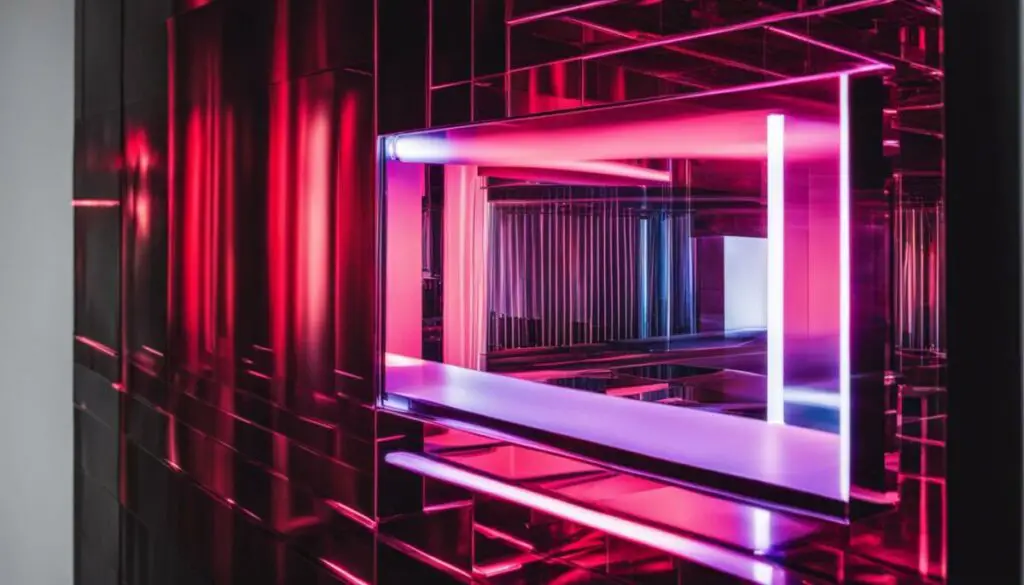
When it comes to understanding whether mirrors reflect infrared light, it’s essential to explore the specific properties of mirrors that enable them to do so. The key factor in mirror reflection is the smoothness and flatness of the surface, which allows for the reflection of light waves.
But what makes mirrors unique is their ability to reflect not just visible light but also infrared light. This is due to the fact that mirrors are made of materials with high reflectivity, such as glass coated with a thin layer of metal.
The reflective nature of mirrors is also influenced by their thickness and curvature. Thicker mirrors reflect more light, while curved mirrors produce virtual images that are reflections rather than actual objects.
Another critical aspect of mirrors is their ability to absorb some of the energy of the light waves that strike their surface. This absorption leads to a reduction in the intensity of the reflected light, which can impact infrared reflectivity.
To measure the reflectivity of a mirror, an instrument called a spectrophotometer is used. This device measures the amount of light reflected from the surface at different wavelengths, providing a detailed analysis of the mirror’s properties.
| Mirror Property | Effect on Infrared Reflectivity |
|---|---|
| Smoothness and Flatness | Higher reflectivity |
| Thickness | Higher reflectivity |
| Curvature | May produce virtual images and affect reflectivity |
| Material | Higher reflectivity with materials like glass coated with metal |
These factors interact in complex ways, making it challenging to predict the exact reflectivity of a given mirror surface for a specific wavelength of light. However, understanding these properties and their impact on reflectivity is crucial for applications such as infrared spectroscopy and thermal imaging.
“The reflective nature of mirrors is due to the smoothness and flatness of the surface, which allows for the reflection of light waves.”
Overall, the properties of mirrors play a critical role in their ability to reflect infrared light. By understanding the factors that influence infrared reflectivity, we can better harness the potential of mirrors for various applications in infrared technology.
How Do Mirrors Work with Infrared?
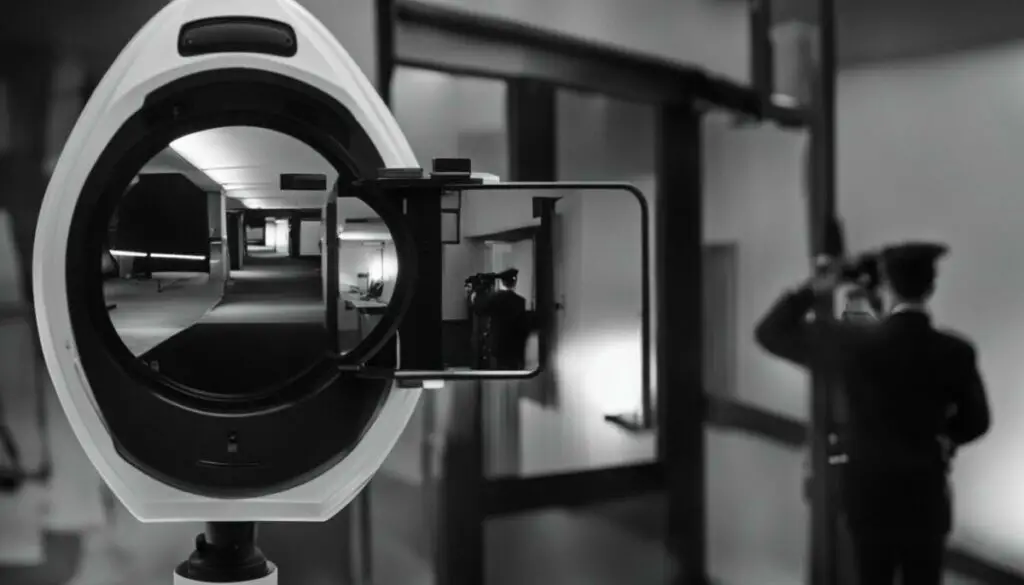
When it comes to understanding how mirrors work with infrared, it is essential to examine the scientific principles behind the reflection of infrared waves. Infrared light is a type of electromagnetic radiation that falls outside the visible light spectrum. It has a longer wavelength than visible light, which means it can pass through certain materials that visible light cannot.
Mirrors, on the other hand, are designed to reflect visible light. They are made of a thin layer of metal, such as aluminum or silver, that is coated onto a glass surface. When visible light hits a mirror, it bounces off at an angle that is equal to the angle at which it hit the mirror. This process is what creates a reflection that we can see with our eyes.
But how do mirrors reflect infrared waves? The answer lies in the properties of the metal coating on the mirror’s surface. The metal layer on a mirror is highly reflective, which means it reflects a large percentage of the light that hits it. This includes infrared light.
When infrared waves hit a mirror, they bounce off the metal coating just like visible light does. However, the way in which they reflect is slightly different. Infrared waves have a longer wavelength than visible light waves, which means they are more easily absorbed by the metal coating. As a result, the amount of infrared light that is reflected by a mirror is slightly less than the amount of visible light that is reflected.
| Type of Light | Amount Reflected by Mirrors |
|---|---|
| Visible Light | Almost all |
| Infrared Light | Slightly less than visible light |
This table shows that mirrors are highly reflective for visible light, but only slightly less reflective for infrared light. This means that mirrors can be used in applications that involve infrared light, such as infrared cameras and telescopes. However, it also means that the reflected image may not be as clear as it would be for visible light.
In conclusion, mirrors do reflect infrared light, but the amount of infrared light that is reflected is slightly less than the amount of visible light that is reflected. The metal coating on the mirror’s surface plays a crucial role in reflecting both types of light. Understanding how mirrors work with infrared is essential in many applications that involve infrared technology.
Mirror Coating and Infrared Reflectivity

When it comes to infrared reflectivity, the coating on a mirror can make a significant difference. A mirror coating is a thin layer of metal applied to the mirror surface to enhance its reflectivity. The type of coating used can affect how well the mirror reflects infrared light.
Metal coatings like aluminum and silver have high reflectivity in the infrared spectrum, making them ideal for use in infrared applications. However, these coatings can also be prone to oxidation or corrosion, which can impact their effectiveness over time.
Alternatively, dielectric coatings, which are made of non-metallic materials like silicon dioxide and titanium dioxide, can also be used to enhance the reflectivity of infrared light. These coatings are more durable than metallic coatings and can provide high reflectivity across a broader range of wavelengths.
The Impact of Coating Thickness
The thickness of the mirror coating can also impact its reflectivity. A thicker coating can enhance reflectivity, but it can also introduce other issues. For example, a thicker coating may lead to increased absorption of infrared light, resulting in heat buildup that could damage the mirror or the object being reflected.
Applications of Coated Mirrors in Infrared Technology
Coated mirrors are used in a variety of infrared applications, ranging from thermal imaging to spectroscopy. Infrared cameras, for instance, use mirrors to reflect infrared radiation onto an array of sensors that capture the image. In spectroscopy, coated mirrors are used to reflect specific wavelengths of infrared light for analysis.
Overall, the type of coating used on a mirror can have a significant impact on its infrared reflectivity. Factors like coating type and thickness must be carefully considered to ensure optimal performance in infrared applications.
The Science Behind Infrared Reflection in Mirrors
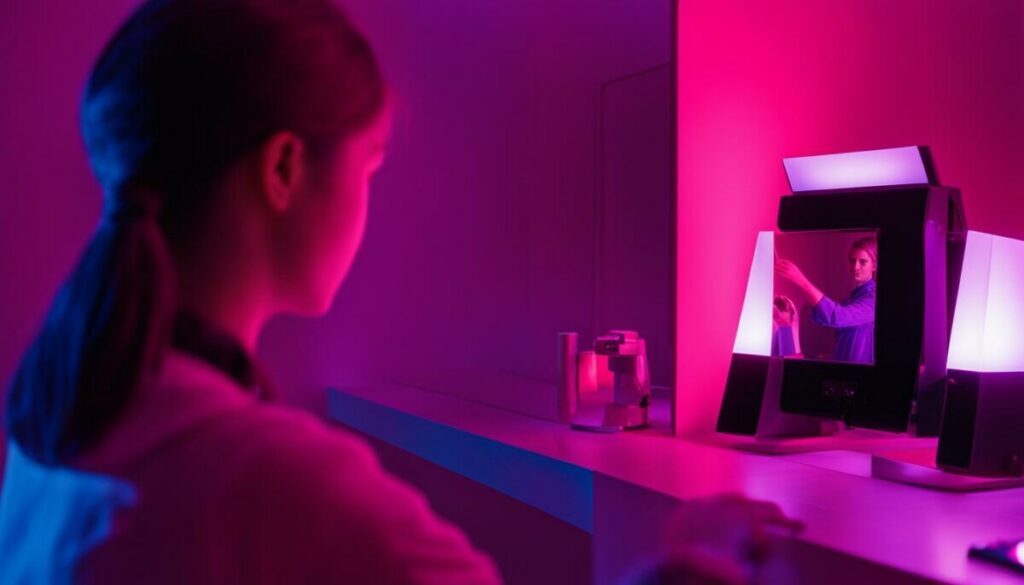
Understanding the science behind infrared reflection in mirrors is crucial in comprehending how mirrors reflect infrared light. When infrared light encounters a mirror, it behaves in a similar way to visible light. The light wave interacts with the surface of the mirror, and upon reflection, the angle of incidence is equal to the angle of reflection, as described in the law of reflection.
However, the extent to which infrared light is reflected by a mirror depends on several factors. One of the most important factors is the nature of the mirror surface. Infrared reflectance in mirrors is determined by the smoothness, texture, and composition of the mirror surface.
| Mirror Surface Property | Influence on Infrared Reflectivity |
|---|---|
| Smoothness | Smooth surfaces tend to reflect more infrared light than rough surfaces due to decreased absorption. |
| Texture | Mirror surfaces with fewer defects and uniform texture exhibit high reflectivity for infrared light. |
| Composition | The chemical composition of the mirror surface can also affect infrared reflectivity; silver and aluminum coatings are highly reflective to infrared radiation. |
The angle of incidence also influences the amount of infrared light reflected by a mirror. The reflectivity increases as the angle of incidence approaches 90 degrees, and at that angle, the mirror exhibits maximum reflectivity for infrared radiation.
The wavelength of the incident infrared radiation also plays a role in the reflectivity of mirrors. The shorter the wavelength, the lower the reflectivity of the mirror surface. Thus, mirrors may reflect longer wavelength infrared radiation better than shorter wavelength infrared radiation.
“The nature of the mirror surface, the angle of incidence, and the wavelength of the infrared radiation are all important factors that determine the amount of infrared light reflected by a mirror.”
In conclusion, understanding the science behind infrared reflection in mirrors is key to comprehending how mirrors reflect infrared light. The smoothness, texture, composition, angle of incidence, and wavelength of the incident infrared radiation all play a role in the reflectivity of mirrors. By taking into account these factors, we can better understand the interaction between mirrors and infrared radiation.
Exploring Infrared Technology and Mirrors

As we’ve learned, mirrors reflect not only visible light but also infrared waves. This property makes them an essential component of many infrared devices and technologies. In this section, we will explore the various applications of infrared technology and the role that mirrors play in their functionality.
Infrared Waves and Mirror Reflection
Infrared technology is used in a wide range of industries, including medical imaging, industrial inspection, and even space exploration. Infrared waves are invisible to the naked eye but can be detected using specialized equipment. When infrared waves encounter a mirror surface, they are reflected back in a similar manner to visible light waves.
One of the key advantages of using mirrors in infrared technology is their ability to focus and direct infrared waves. Mirrors can be shaped and angled to reflect infrared waves in specific directions, allowing them to be channeled into detectors or sensors for analysis.
Mirror Coating and Infrared Reflectivity
The infrared reflectivity of mirrors can be influenced by the type of coating applied to their surface. Different coatings can enhance or reduce a mirror’s ability to reflect infrared waves, depending on the specific wavelengths involved.
For example, some mirror coatings are designed to enhance their reflectivity in the near-infrared (NIR) region, while others are optimized for the mid-infrared (MIR) or far-infrared (FIR) regions. Choosing the right mirror coating for a particular application requires a thorough understanding of the properties of different coatings and their impact on infrared reflectivity.
Applications of Infrared Technology and Mirrors
Mirrors are used in a variety of infrared applications, ranging from simple handheld devices to complex imaging systems. Some examples of infrared devices that utilize mirrors include:
| Application | Device Type |
|---|---|
| Medical imaging | Infrared cameras |
| Industrial inspection | Infrared sensors |
| Environmental monitoring | Infrared telescopes |
By using mirrors to reflect and direct infrared waves, these devices can capture detailed images and data that are not visible to the naked eye. Infrared technology is also used in security and surveillance systems, where it can detect objects and activities that are otherwise invisible.
Unlocking the Potential of Infrared Technology with Mirrors
The ability of mirrors to reflect and manipulate infrared waves opens up a world of possibilities in terms of analyzing and understanding the world around us. From medical diagnostics to environmental monitoring, infrared technology is an invaluable tool for a wide range of applications.
By understanding the behavior of infrared waves in mirrors and the properties that influence infrared reflectivity, we can continue to improve and advance our infrared technologies and devices. Mirrors may seem like a simple component, but their importance in the field of infrared technology cannot be overstated.
Exploring Infrared Technology and Mirrors
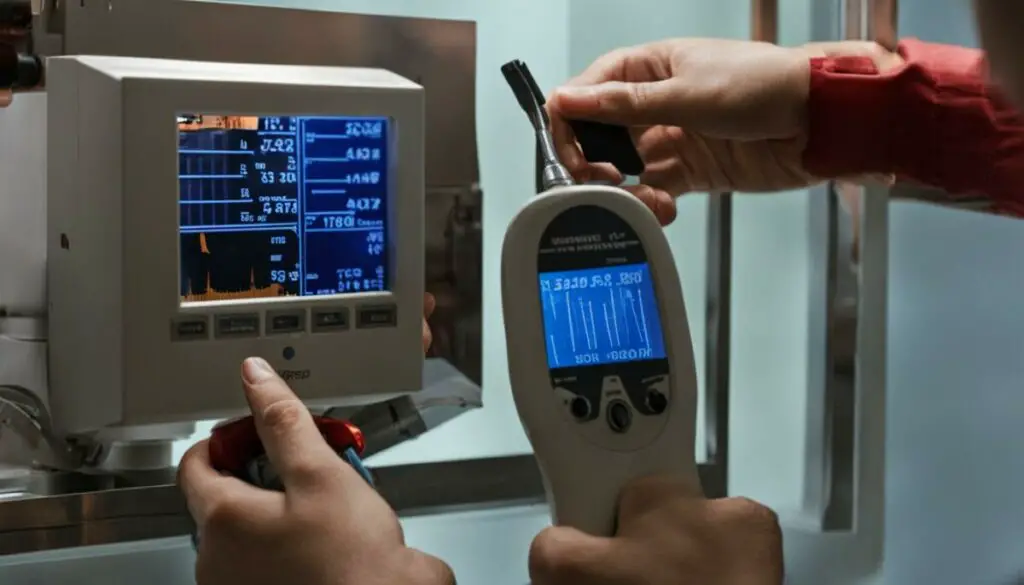
Infrared waves and mirror reflection have a significant impact on various technological fields. From security systems to medical imaging and industrial processing, infrared technology has revolutionized the way we see and analyze the world around us.
One of the properties of mirrors that makes them ideal for use in infrared technology is their high reflectance. Infrared radiation easily penetrates most materials, but mirrors reflect a significant portion of it, allowing the technology to capture and analyze the reflected waves.
However, not all mirrors are created equal when it comes to their infrared reflectivity. The properties of mirrors, such as their thickness, smoothness, and coating, can affect their ability to reflect infrared radiation.
For example, an aluminum coating on a mirror enhances its reflectivity in the infrared spectrum, making it an optimal material for infrared applications. Conversely, a silver mirror coating might not be as effective in the infrared range, as it has a lower reflectivity compared to aluminum.
Table: Reflectivity of Different Mirror Coatings in the Infrared Spectrum
| Mirror Coating | Infrared Reflectivity |
|---|---|
| Aluminum | 95% |
| Silver | 90% |
| Gold | 75% |
The use of mirrors in infrared technology is not limited to simple reflection. Mirrors can also be used in complex systems, such as telescopes and spectrometers, to manipulate and focus the infrared radiation for specific applications.
The reflective properties of mirrors in the infrared range also play a critical role in industrial processing and manufacturing. Infrared technology enables non-destructive testing and analysis, allowing for accurate measurements without damaging the materials being tested.
The Future of Infrared and Mirror Technology
The properties of mirrors and their interaction with infrared radiation continue to be an essential area of research for many technological fields. With advancements in mirror coating technology, the potential for the use of infrared waves in various fields is increasing.
From aiding in the detection of diseases to enhancing security systems and improving energy efficiency, the applications of infrared technology are vast and continually expanding. With mirrors playing a crucial role in making this technology possible, the future is bright for the fascinating world of infrared waves and mirror reflection.
The Impact of Mirror Reflection on Infrared Analysis
Understanding the behavior of infrared waves in mirrors is critical for precise infrared analysis. Mirror reflection can impact the accuracy of infrared measurements, and the concept of mirror and infrared reflectivity comes into play here.
When infrared light is reflected off a mirror, it changes direction, and the angle of reflection is equal to the angle of incidence. This means that the reflected light can be directed into a detector for measurement. However, mirror reflection can also cause the infrared beam to scatter or split, resulting in a loss of signal and reduced accuracy.
The properties of mirrors also play a role in infrared analysis. The reflective coating on a mirror affects its ability to reflect infrared waves, and different types of coatings can enhance or reduce infrared reflectivity. For example, a high-reflectivity coating can improve signal strength, while a low-reflectivity coating can reduce background interference.
Case Study: Infrared Spectroscopy
An example of the impact of mirror reflection on infrared analysis can be seen in the technique of infrared spectroscopy. Infrared spectroscopy is used to identify and analyze chemical compounds based on their unique infrared spectra.
The accuracy of infrared spectroscopy is dependent on the quality of the infrared beam reaching the detector. If the beam is scattered or split due to mirror reflection, the resulting spectra will be distorted and inaccurate.
To address this issue, spectroscopists use techniques such as Fourier transform infrared (FTIR) spectroscopy, which eliminates the need for mirrors by using a Michelson interferometer to create an interference pattern that can be Fourier-transformed into an infrared spectrum.
“Infrared reflection in mirrors can have a significant impact on the accuracy of infrared analysis, making it crucial to understand the principles of mirror and infrared reflectivity.”
In conclusion, infrared reflection in mirrors cannot be ignored when it comes to accurate infrared analysis. The properties of mirrors, the angle of incidence and reflection, and the reflective coating all influence infrared reflectivity and can impact the accuracy of measurements. By understanding these principles, scientists can ensure precise and reliable results in their infrared analysis.
Conclusion
After exploring the science behind infrared reflection in mirrors and the properties that influence infrared reflectivity, we can conclude that mirrors do reflect infrared light. Through our discussion of how mirrors work with infrared and the impact of mirror coatings on infrared reflectivity, we have gained a comprehensive understanding of this fascinating topic.
The Role of Mirrors in Infrared Technology
Our exploration of the role of mirrors in infrared technology has demonstrated their crucial importance in harnessing the potential of infrared waves. From their use in infrared devices to the impact of mirror reflection on accurate infrared measurement and analysis, mirrors play a vital role in this exciting field of research.
Looking to the Future
As technology continues to advance, the potential of infrared waves and mirrors is only set to grow. By understanding the behavior of infrared waves in mirrors, we can unlock new possibilities for the use of infrared technology in numerous fields.
Thank You for Reading
Thank you for joining us on this journey of discovery! We hope that this guide has shed light on the fascinating world of infrared technology and the important role that mirrors play in it.
FAQ
Do mirrors reflect infrared light?
Yes, mirrors are capable of reflecting infrared light, just like they reflect visible light. The reflective properties of mirrors allow them to bounce back infrared waves, making them useful in applications such as infrared technology and analysis.
How do mirrors interact with infrared waves?
Mirrors interact with infrared waves through the same principles of reflection that apply to visible light. When infrared waves hit the surface of a mirror, they are reflected back at the same angle of incidence, allowing the mirror to redirect and focus infrared light.
What factors influence the infrared reflectivity of mirrors?
Several factors can influence the infrared reflectivity of mirrors, including the type of mirror coating, the quality of the mirror surface, and the angle of incidence of the infrared waves. These factors can affect the efficiency of infrared reflection and its applications.
How do mirror coatings impact infrared reflectivity?
Mirror coatings can enhance or reduce infrared reflectivity depending on their composition. Certain coatings are designed to improve the mirror’s ability to reflect infrared light, while others may be specifically engineered to reduce or block infrared waves.
What is the science behind infrared reflection in mirrors?
Infrared reflection in mirrors is governed by the principles of infrared reflectance and the surface characteristics of mirrors. The smoothness and quality of the mirror surface play a significant role in the mirror’s ability to reflect infrared waves effectively.
How are mirrors used in infrared technology?
Mirrors are commonly used in infrared technology to manipulate and direct infrared light. They are essential components in devices such as infrared cameras, telescopes, and sensors, allowing for efficient collection and analysis of infrared radiation.
What is the importance of understanding mirror reflection in infrared analysis?
Understanding how mirrors reflect infrared light is crucial for accurate infrared analysis. The behavior of infrared waves in mirrors can impact the measurements and interpretations of infrared data, making it essential to consider the reflective properties of mirrors in infrared analysis.
Can mirrors reflect other types of light besides infrared?
Yes, mirrors can reflect various types of light, including visible light and ultraviolet light. The reflective properties of mirrors are not limited to a specific wavelength range and depend on the material and design of the mirror surface.

